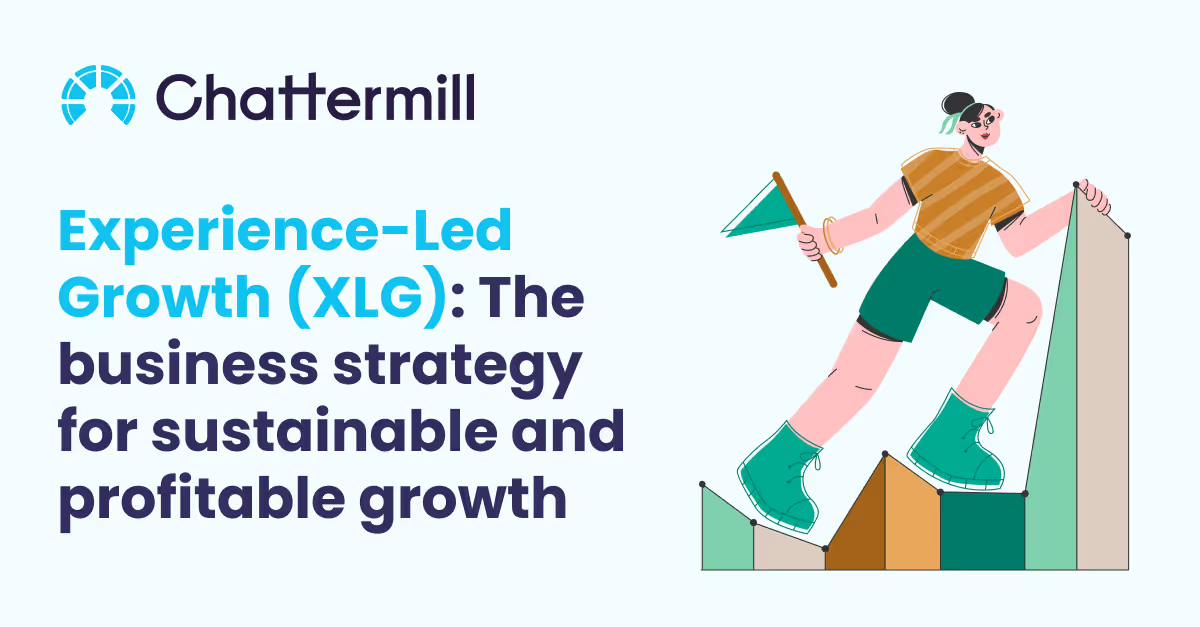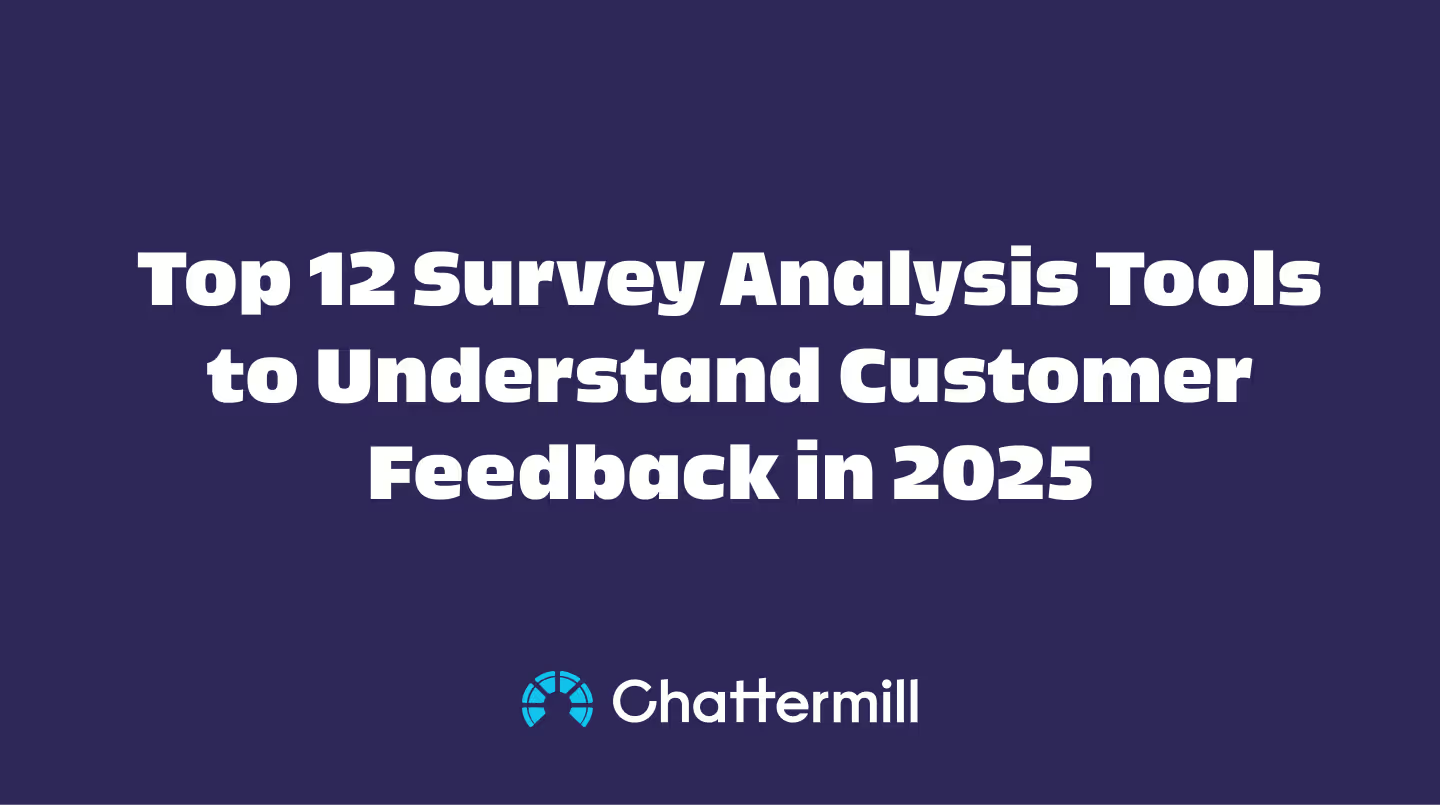We recently hosted the first webinar on XLG with McKinsey.
McKinsey Partner Oliver Ehrlich and Oliver Schoen, Head of GTM at Eon Next sat down with me to discuss how you can achieve sustained profitable growth by treating Customer Experience (CX) as your main competitive advantage.
We at Chattermill are firm believers in the power of XLG and with customer loyalty becoming more fragile than ever, CX has never been more crucial for building lasting relationships and long-term profitability.
So, settle in as we take a look at the three main takeaways from this discussion.
What did we learn?
- How to connect CX to long-term profitable growth
- Why you need to be the advocate for your customer’s unique needs
- How Eon Next uses XLG to be customer obsessed
How to connect CX to long-term, healthy growth
We’re major advocates of sustainable growth. CX leaders substantially outgrow their peers across industries. However, businesses tend to think about growth in terms of being great at sales and marketing to drive a powerful acquisition engine. This is understandable because it can be easier than focusing on CX, especially if you rely on one function to optimize acquisition excellence, or you’re a small company needing to scale at pace.
Oliver Ehrlich, Partner at McKinsey shares how companies need to avoid the acquisition trap: “If you’re always feeding the acquisition engine by getting new customers, then they’re underwhelmed by what they experience as your customers and they go out of the funnel again quickly, you tend to get into a downward spiral of diminishing value.” He explains, “it often takes three new customers to get to the same margin level to compensate for one lost customer.”
Enterprises should ensure that they have an end-to-end perspective of the customer lifecycle across teams from onboarding to renewals. This enables them to know how their customers feel and signal if something goes wrong to increase share of wallet, retention, and cross-selling.
Be the advocate for your customer’s unique requirements
XLG is key for scaling customer feedback across your customer journey - it’s all about empowering teams with customer insights and making decisions that drive outcomes. This actually reduces the costs of acquisition by increasing retention, frequency of purchases, and driving upsell.
Mikhail Dubov, CEO and co-founder of Chattermill explains: “It may seem counterintuitive, but most of our customers find that even on the acquisition side of things, they get more efficiencies from XLG because most of their acquisition comes through word of mouth rather than paid marketing.” He adds “So when executed correctly, XLG delivers benefits all across the customer journey.”
CX can be difficult to uncover because it often seems counterintuitive. For example, Ryanair’s customers are all about cost, so they’re happy to sacrifice everything for reduced expenses. Costco is another company that’s rejected the traditional drivers of customer experience - like smooth checkout or craftsmanship - for optimization on price.
Mikhail says “These companies have built an extremely successful business by doing the exact opposite of what Amazon and most other retailers like Walmart would do. So there is a way to succeed with a unique strategy built around your specific customers.”
This shows that there is no by-the-numbers playbook for building a strong customer experience. XLG is the intuitive way to succeed in a customer-first world where exceptional CX is unique to every company.
How Eon Next uses XLG to drive their customer obsession
Oliver Schoen, Head of GTM at Eon Next, explains how a merger with another company suddenly created two operations in the UK: Eon and Npower. However, Npower had specific CX challenges, with a significantly lower Trustpilot score that posed risks to Eon’s brand. T
his, coupled with the fact that opportunities for new customer acquisition in energy are limited, meant that Eon needed to defend its customer base.
Oliver Schoen says “rather than trying to fix what was already there, we had an opportunity to build something new. That's what we did with CX at its heart. We built a new organization that absorbed all the customers from Eon and Npower but with a new brand and a new promise of customer experience.”
The point is clear: CX is a game-changer for many businesses and how it’s scaled across an organization is usually the defining success factor. Here are three tips from Eon Next taken directly from their experience navigating this change.
1. Create the key foundations to deliver on CX and growth
To transform their CX, Eon Next had to focus on building a foundation from four key areas:
- New brand: Customer-centricity derived from empowering teams across the organization to improve how they talk to customers, how they drive specific touchpoints, and to understand the experience they aim to create.
- Technology ecosystem: Developed a cloud-native digital product ecosystem around Kraken to empower customer-facing teams to self-serve and experiment. Eon needed to get the insights and also make sure that they could act on them.
- Operating model: Innovative operating model based on end-to-end ownership - and employee empowerment - as well as agile and lean methodologies.
- Culture: A culture driven by ownership, action, and performance outcomes. The main focus here was to make sure that customer issues could be solved with their first contact, rather than being passed across the organization.
2. Build CX capability systematically through distinct capabilities
Oliver Schoen explains that the most important aspect of CX is to deliver accurate insights across the entire organization. This requires that the organization delivers real-time insights, rapid action, and end-to-end ownership through the following capabilities:
- Brand promise: Clearly communicated
- Technology: Event-based and insights platforms
- Operating model: Integrated, co-located, cross-functional
- Culture: all service
Oliver Schoen explains that specific capabilities are required because many CX programs are similar to a game of Chinese whispers. Oliver Schoen says “Whatever story you start the journey with, is often very different from the story that's told at the end of the journey. Now, why am I talking about this? Because this is the same in CX. The solution is often so removed from the real problem that the action taken is targeting the wrong problem.”
The answer is to “get the feedback loop close to the customer so that you can really understand how things operate to drive a great customer experience. This means you need insights in real-time.” By using technology to share insights across functions, Eon Next made CX sustainable across their organization.
3. Measure results - and see what else is required
So far, Eon Next has achieved the following gains from its XLG program:
- Brand performing well according to various trackers
- Winner of several awards on brand, communication, and transformation
- Trustpilot score related to digital with a peak of 4.6 out of 5
- Customer stickiness significantly improved and best vs peer group for the first time
- Online experience and clarity of communication increasingly praised as CX examples
- 1.3m app users with a 4.8 out of 5 app store rating
Now Eon Next is focusing on activating its commodity customer base to embark on their personal energy transition across the company’s energy solutions.
What final advice does the panel have for businesses?
Businesses need to understand that in today’s world, great CX is not a nice-to-have, but essential to long-term profitability in a highly competitive environment.
- Understand that XLG is hard work: It takes leadership commitment, cross-functional work, and continuous improvement.
- Adapt XLG to your business model: If you’re using a freemium business model, for example, then there are variations in the process. You need to start with where you want to be—for example, no frills versus premium—and that translates into different decisions along the customer journey and the channels you have. You need to pull the right levers so that you’re matching what your customers want every step of the way.
Oliver says, “You probably don’t have the resources to be world-class across everything, so you need to know where to reach hygiene level and where to reach for the best.”
- There is no substitute for cross-functional collaboration: Oliver Schoen explains that his teams are co-located to create “super fertile ground for collaboration on customer experience topics in a much more seamless way. It also gives you the opportunity for your teams to come together and solve issues around customer problems.
He adds “So, you need co-location and deep cross-functional integration. Foster strong ties between different functions and don't design it in a siloed way.”
XLG is the key to success
XLG holds the secret to long-term success with CX. Companies need to get as close to their customers as possible, share insights across functions, and democratize CX across their organizations. This will set their teams up for success and empower them to incorporate customer feedback into everything they do, from tactical actions to strategic decisions.
Thanks to Eon Next for being a Chattermill customer and for sharing their time and insights.















